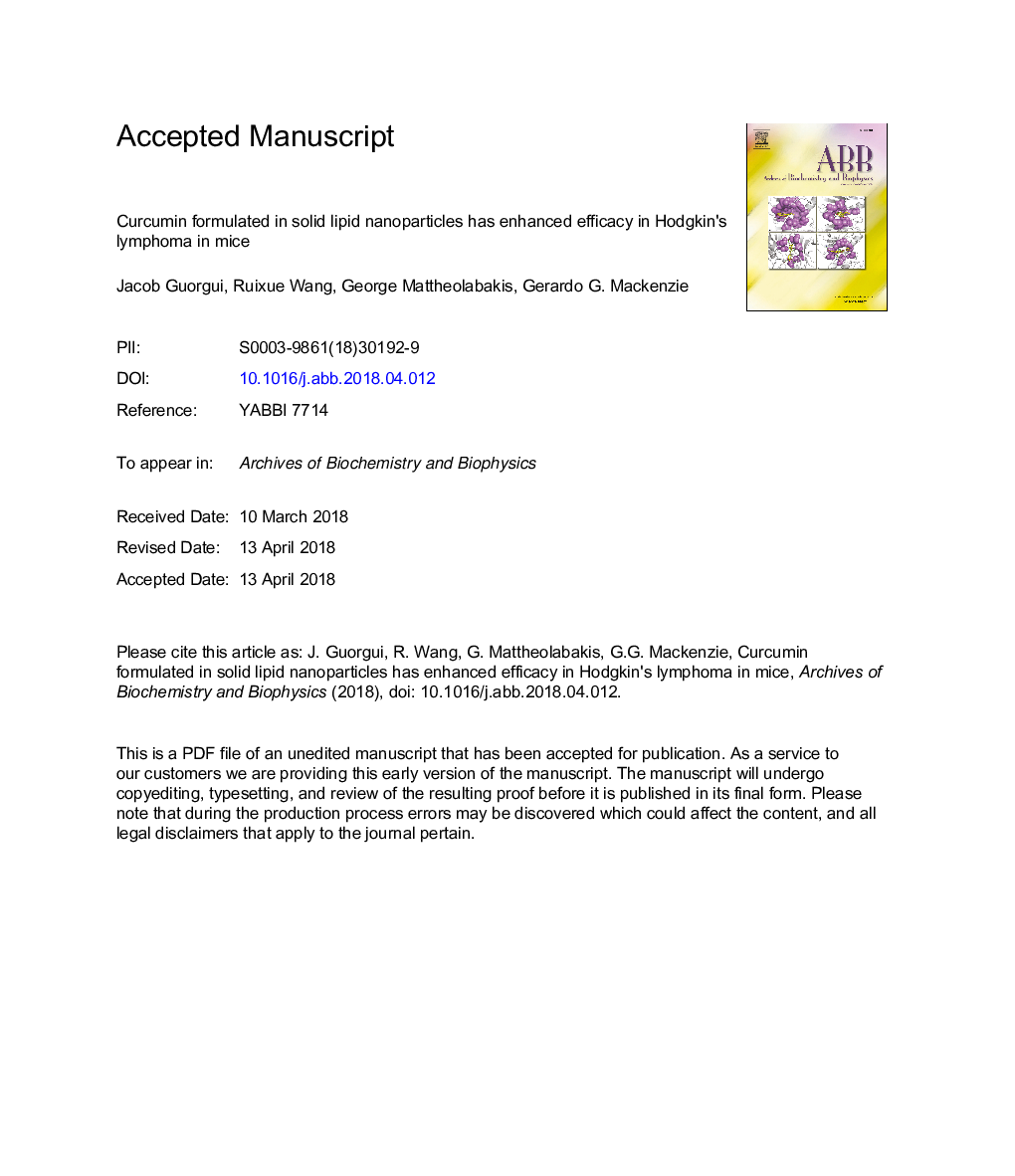| Article ID | Journal | Published Year | Pages | File Type |
|---|---|---|---|---|
| 8288561 | Archives of Biochemistry and Biophysics | 2018 | 29 Pages |
Abstract
Curcumin reduces Hodgkin's lymphoma (HL) cell growth in vitro, but its unfavorable pharmacokinetics highlight the need for novel in vivo delivery systems. Thus, we explored whether formulation of curcumin in solid lipid nanoparticles (SLN-curc) or d-α-Tocopheryl polyethylene glycol 1000 succinate (TPGS) nanoparticles (TPGS-curc) could enhance its efficacy in mice. Curcumin formulated in SLN and in TPGS resulted in higher curcumin plasma levels in mice. Compared to vehicle-treated controls, SLN-curc and TPGS-curc reduced HL xenograft growth by 50.5% (pâ¯<â¯0.02) and 43.0% (pâ¯<â¯0.04), respectively, while curcumin reduced it by 35.8% (pâ¯<â¯0.05). In addition, SLN-curc reduced the expression of proteins involved in cell proliferation and apoptosis (XIAP and Mcl-1) in HL tumor extracts. In HL cells in culture, curcumin decreased the expression of relevant anti-inflammatory cytokines (IL-6 and TNF-α) in a concentration-dependent manner. Moreover, when given in combination with bleomycin, doxorubicin and vinblastine, curcumin showed an additive growth inhibitory effect. In conclusion, SLNs appear as an appropriate and effective drug delivery system for curcumin. Given the efficacy of SLN-curc and the enhanced growth inhibitory effect when combined with chemotherapeutic drugs, we speculate that curcumin, when appropriately formulated, is a promising adjuvant agent for the treatment of HL and merits further evaluation.
Keywords
Related Topics
Life Sciences
Biochemistry, Genetics and Molecular Biology
Biochemistry
Authors
Jacob Guorgui, Ruixue Wang, George Mattheolabakis, Gerardo G. Mackenzie,
